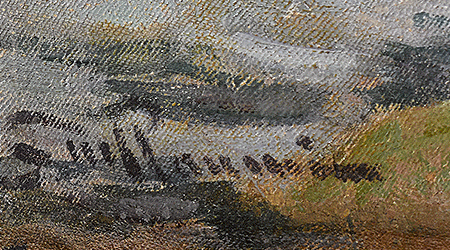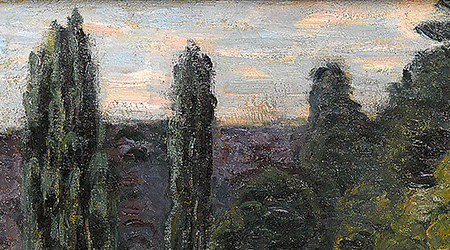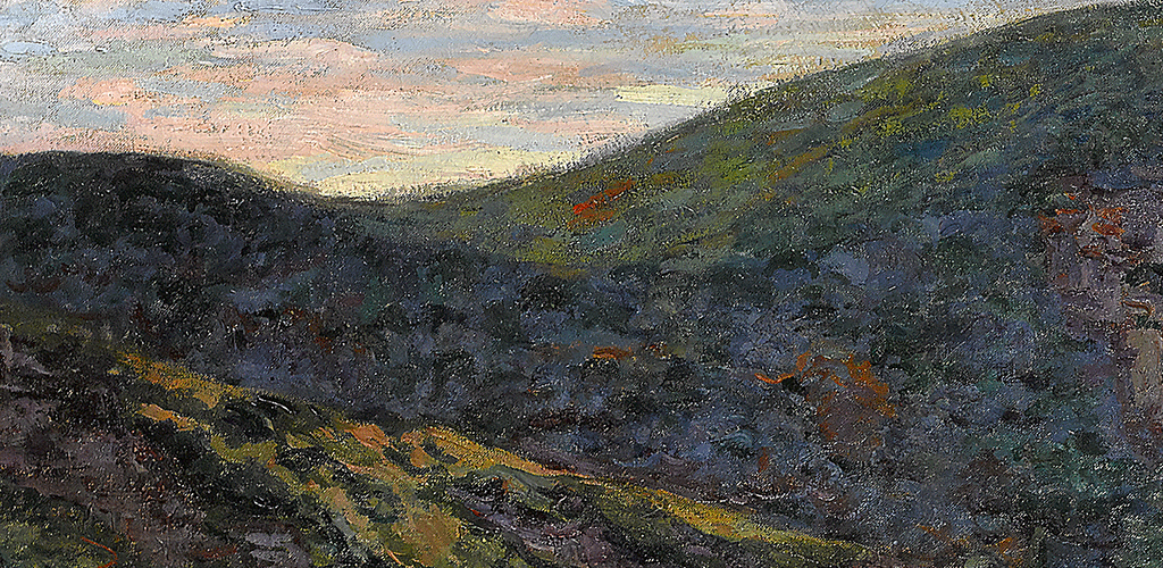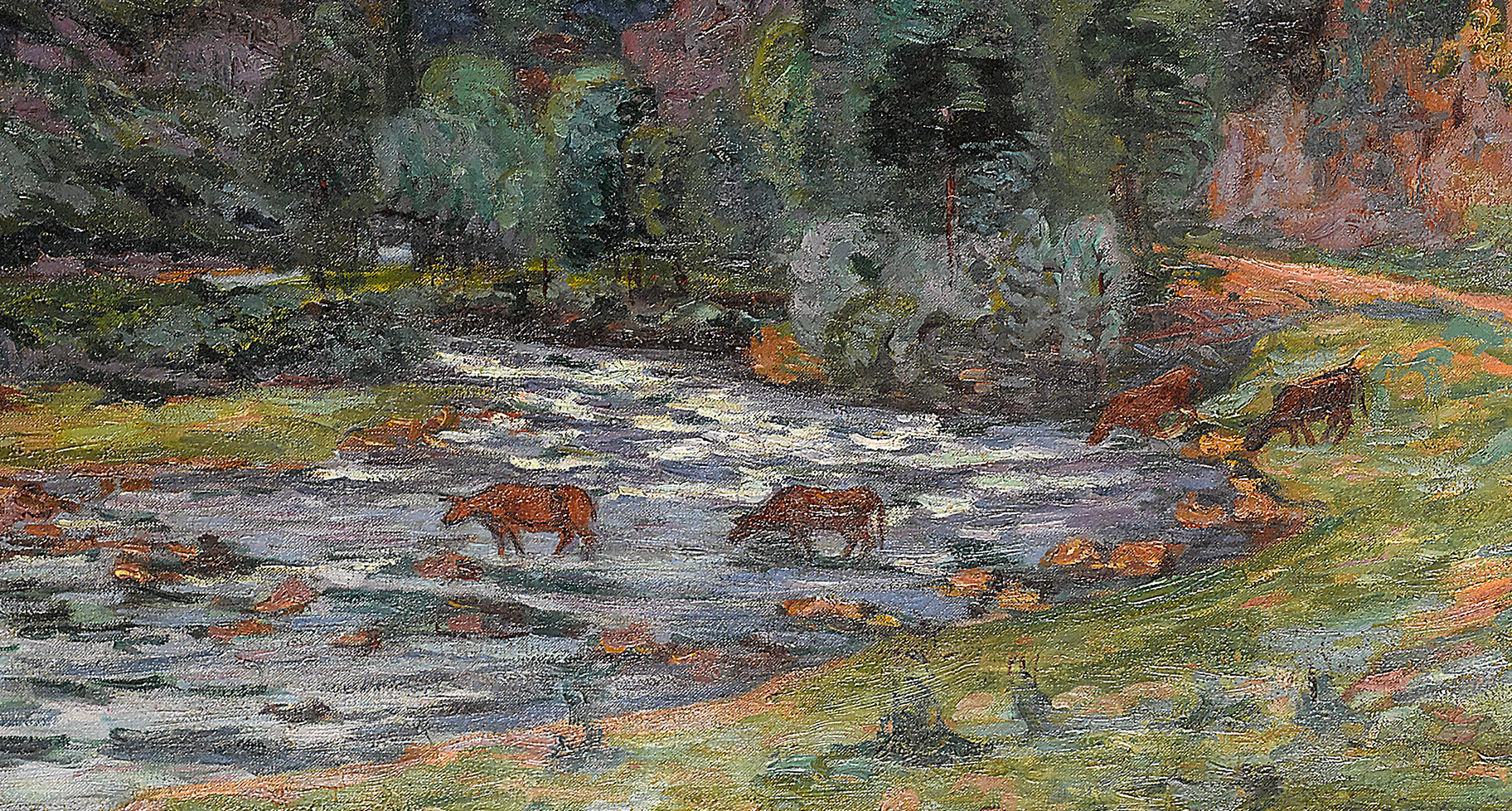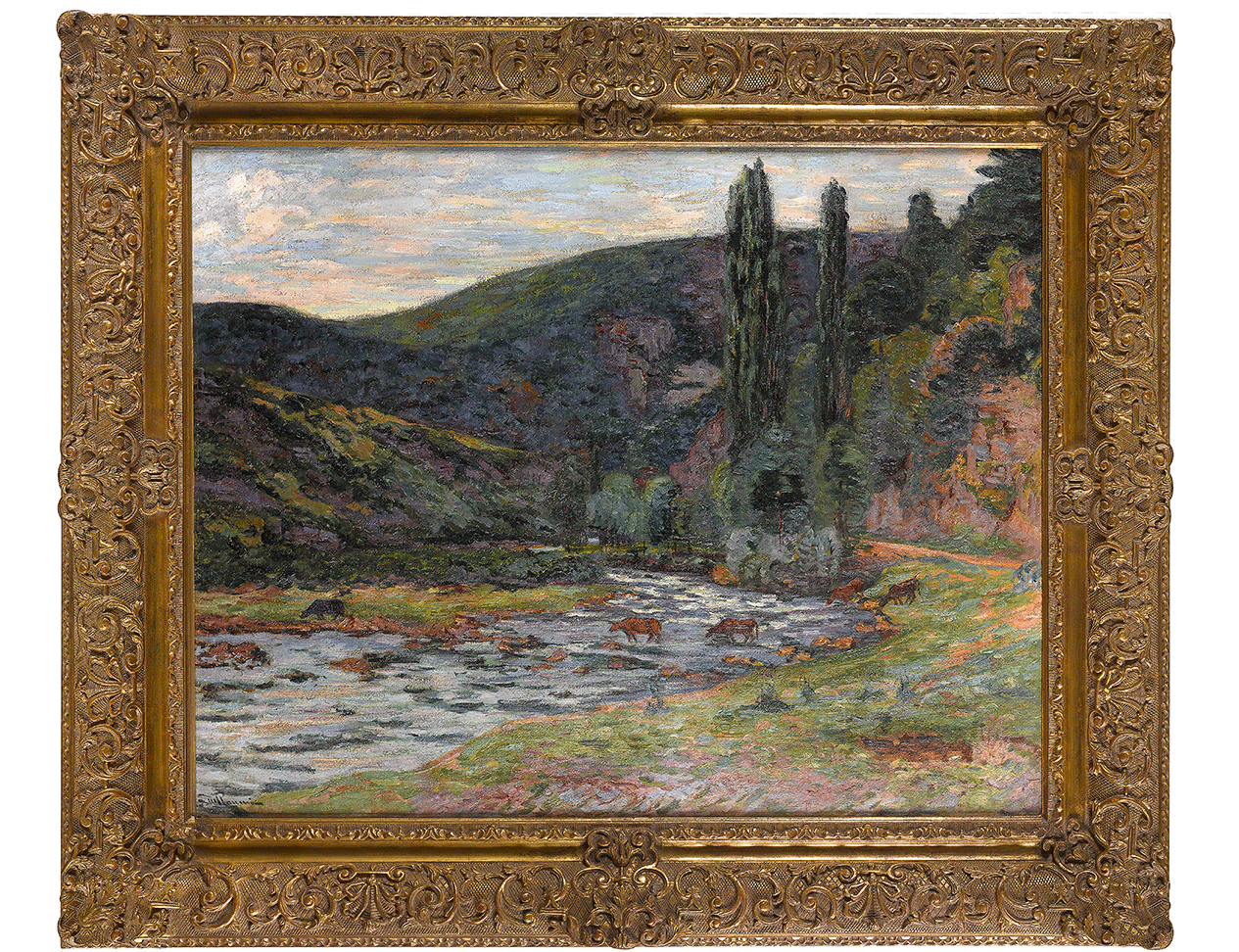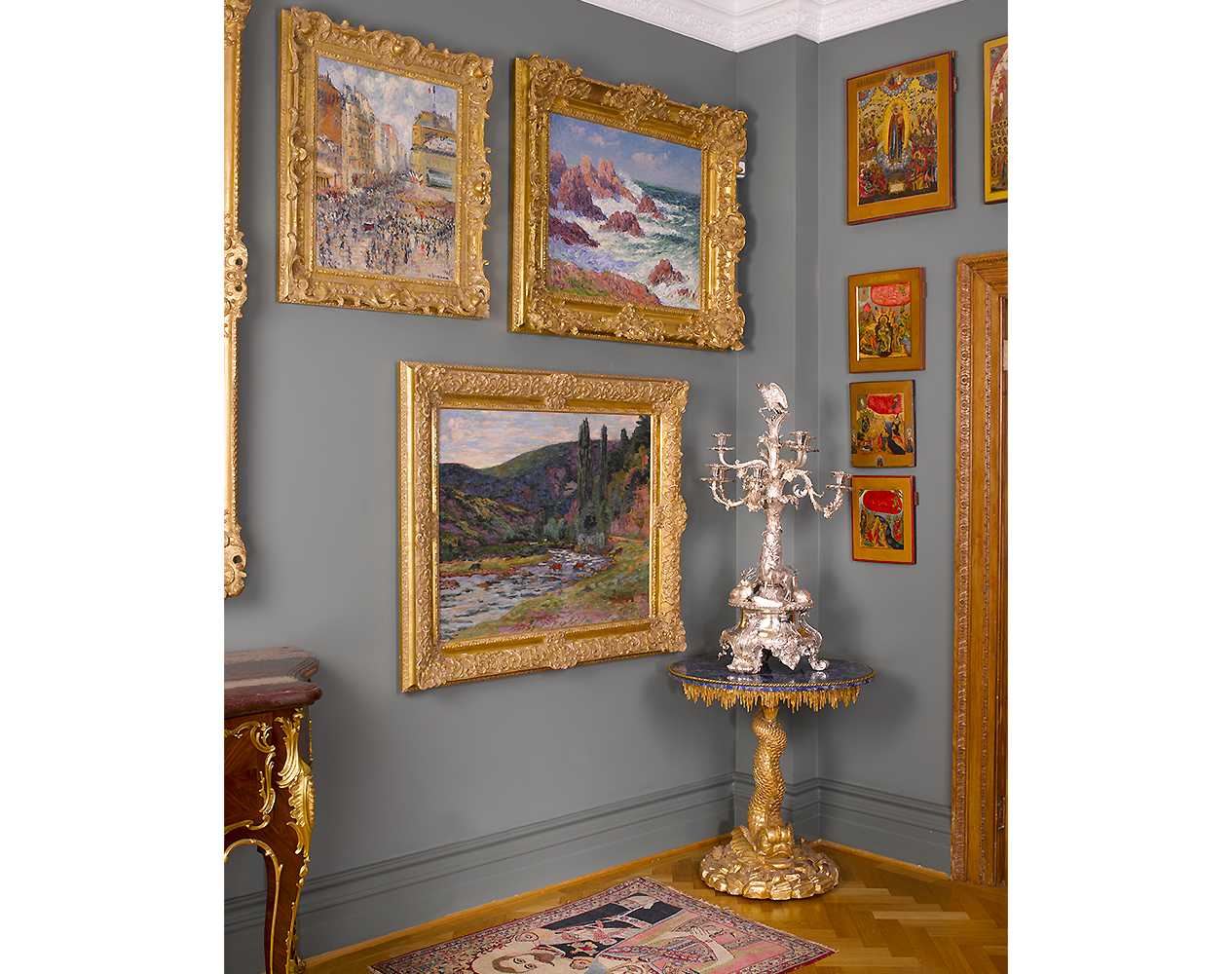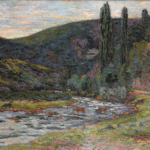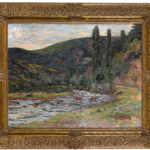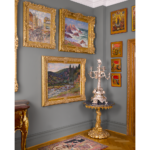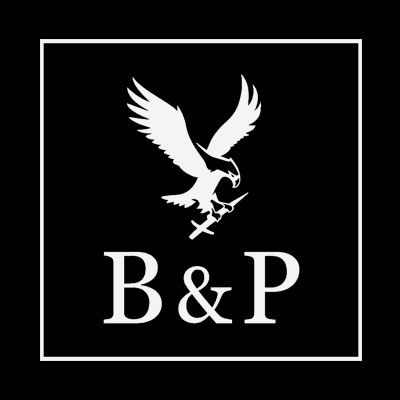A colleague and friend of Pissarro, Cezanne, Gauguin, and later Van Gogh, Guillaumin’s contribution to Impressionist landscape painting have long been recognised by scholars.
Paysage de la Creuse is an example of Guillaumin’s mature proto-Fauve style, characterised by the expressive use of colour and constructive brushstroke. The composition bears the stamp of Guillaumin’s friendship with Van Gogh, who in the late-1880s alerted him to radical chromatic innovations of the Pont-Aven group.
The painting depicts a view of the Creuse Valley, one of Guillaumin’s favourite places, which he had frequented since the early 1890s, being known as the unofficial leader of the so-called Crozant School. Guillaumin was one of many prominent artists who admired the picturesque landscapes of Creuse. It was here in 1889 that Claude Monet conceived his first true series, paving way for the artistic method that three decades later was to find its most accomplished expression in the famed Waterlilies.
Jean-Baptiste Armand Guillaumin was born in Paris in 1841. He studied at the Académie Suisse, where he met Paul Cézanne and Camille Pissarro who were to become his lifelong friends. Their influences are clear, especially in his early works, which act as a basis from which Guillaumin developed his own mature style of post-impressionist landscape painting. Together with Pissarro and Cézanne, Guillaumin exhibited at the first Salon des Refusés in 1863. He participated in six of the eight Impressionist exhibitions: 1874, 1877, 1880, 1881, 1882 and 1886.
Guillaumin’s early reputation was based upon his accomplishment as a draughtsman, his style characterised by the dynamism and economy of his line. He was quickly accepted into the circle of Emile Zola and Edouard Manet, a mark of acceptance into Paris’ flourishing, bohemian artistic circles. In his 1880 article Le Naturalisme au Salon, in which he continued his efforts to promote the Impressionists as the real artists of their day, Zola wrote that ‘Pissarro, Sisley, Guillaumin followed in the footsteps of Claude Monet … they committed themselves to faithfully rendering the corners of nature in Paris, under the true light of the sun, without recoiling from the most unexpected effects of colour.’
In 1883, Guillaumin befriended Paul Signac, and then Georges Seurat. In the following years, he began to work in the pointillist style. In 1886 he became close with Vincent van Gogh, with whose work his own has certain affinities. Towards the end of his life, the vigour of his brushwork and his bright palette brought him close to the Fauves.
In the 1890’s Guillaumin’s prospects improved when he was taken up by the dealer Auguste Portier, who had commenced his career with Durand-Ruel. Financial stability allowed him to travel: he spent some time in Saint-Palais, in 1893-1913 he worked in the Creuse, Crozant, Agay, Auvergne, Louin, Rouen, and Holland. With his death in 1927, Guillaumin was the last survivor of the Impressionist group, of which he was one of the most faithful members.
Guillaumin’s can be found in major museum collections around the world, such as the Metropolitan Museum of Art, Musée d’Orsay, the Hermitage, the National Gallery of Art in Washington, the Art Institute of Chicago, Thyssen-Bornemisza Museum, Neue Pinakothek in Munich and many others.
